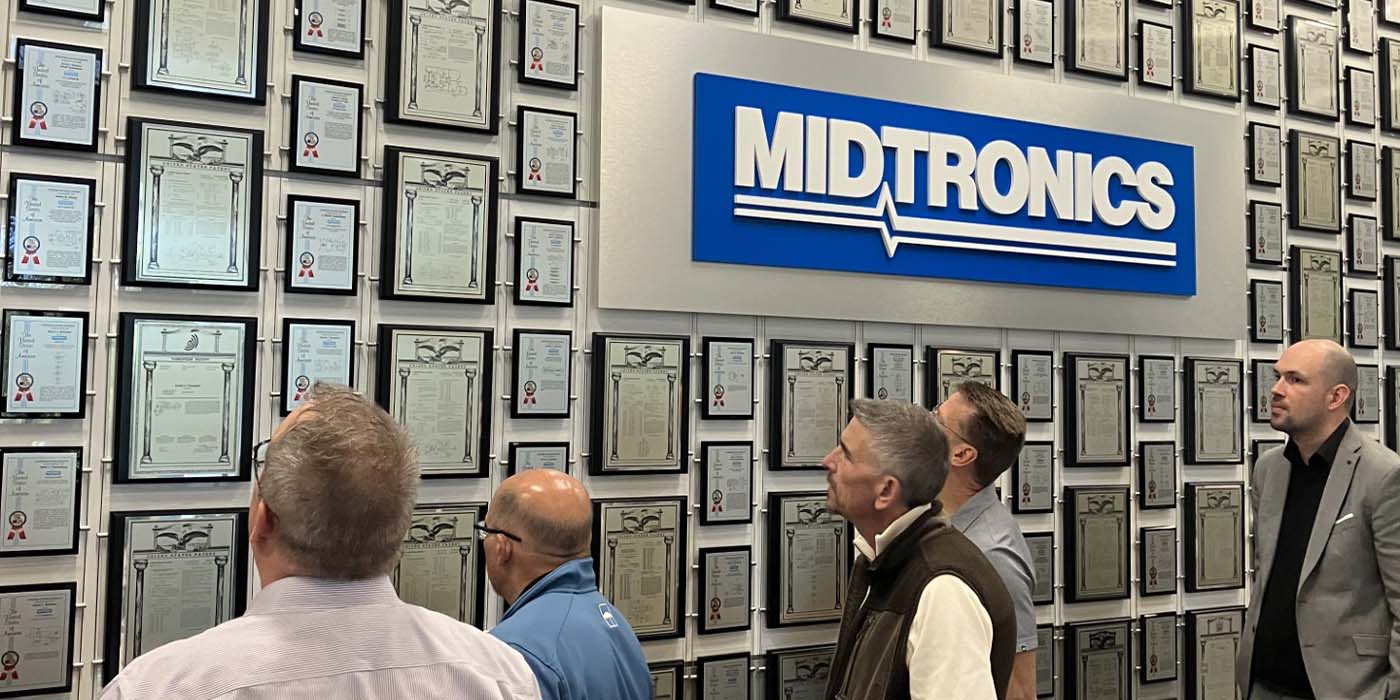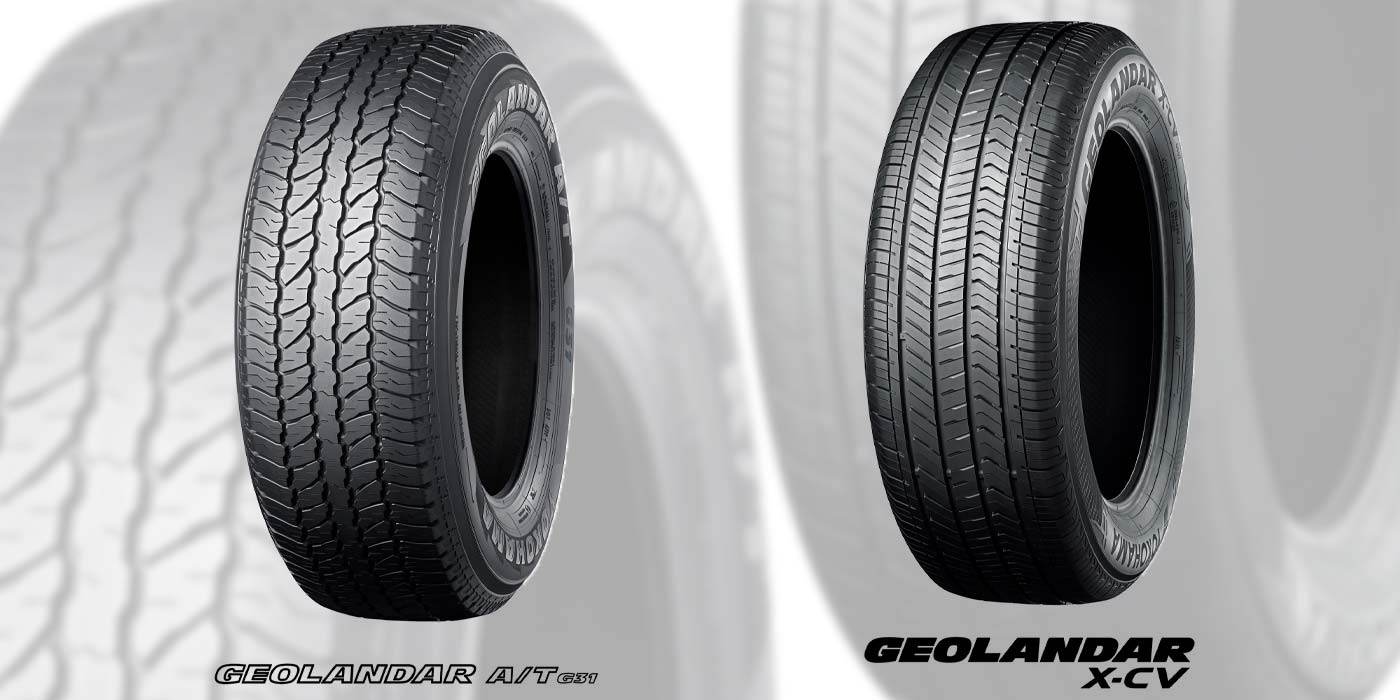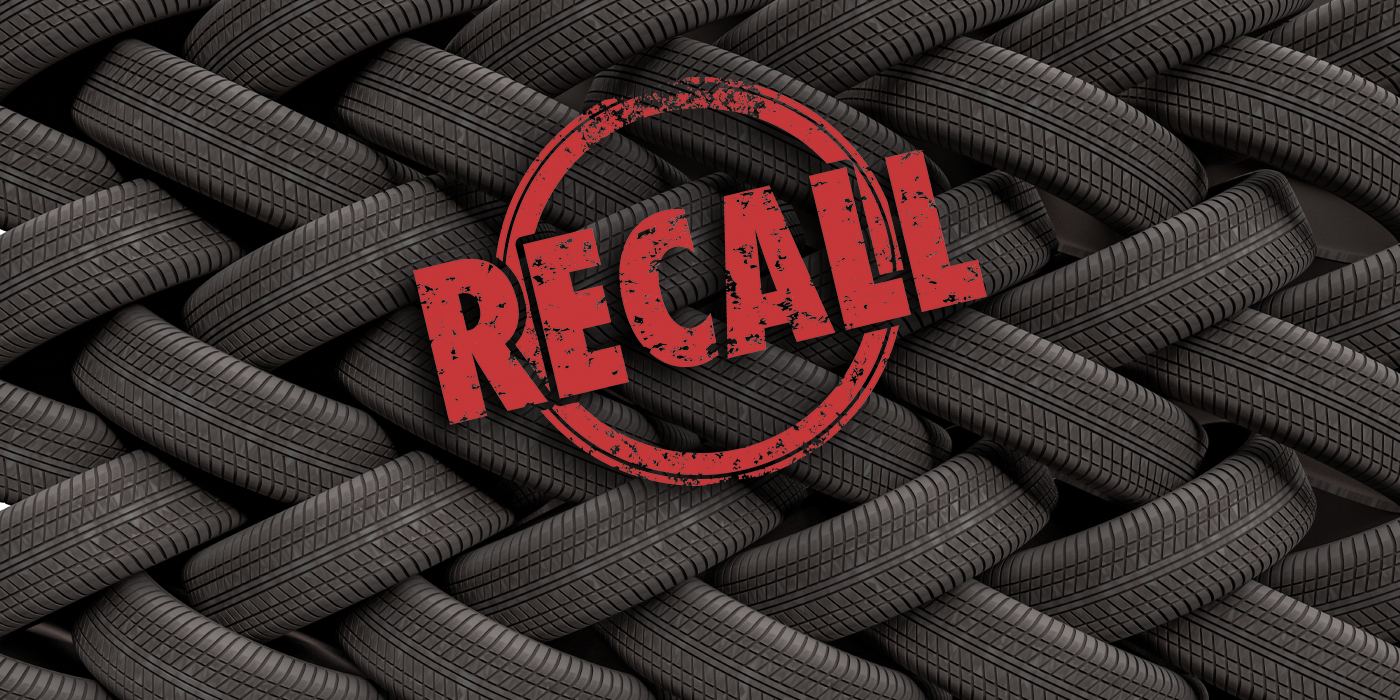To be sure, developing even the first pass version was no easy task. While the core requirement was to create a simple, straightforward means to help consumers find the most fuel-efficient tires, getting there will still take some doing…and leave a few people disappointed.
There are some interesting points in NHTSA’s proposal. For instance, it suggests that with the advent of this proposal NHTSA recommends doing away with the current UTQG system, saying that the new rating program would be a more effective alternative.
NHTSA also guessitmates that it would take between two and nine years to test every single passenger tire SKU, so it will allow tiremakers to basically test one tire within a family (make/model/size range) and use those ratings across the rest of that model. Even then, NHTSA experts only 25% of replacement tire to be labeled at the time the program would formally launch.
NHTSA still concurs with the 2006 National Academy of Sciences report that said tires contribute just 4% to a vehicle’s overall fuel use.
And the mandated consumer education program apparently won’t be as ambitious or wide-ranging as some – especially TIA – envisioned. In fact, based on NHTSA’s proposal, the education program will be almost negligible.
NHTSA said it hopes to issue it final regulations later this year, and is giving “interested parties” until Aug. 21 to voice their opinion on the proposed regs.
So that you didn’t have to wade through all 148 pages, here are some key passages – verbatim and in order of appearance – from NHTSA’s plan:
• Require tire manufacturers to label their replacement tires for fuel efficiency, safety, and durability based on test procedures specified by the agency. These tests address three aspects of tire performance: rolling resistance, traction and treadwear life. As noted above and described in further detail below, rolling resistance is a measurement of fuel efficiency. A measurement of traction is intended to indicate a tire’s ability to stop on wet pavement. Thus, traction is one metric that corresponds to safety. A treadwear rating measures a tire’s wear rate compared with that of control tires. Treadwear life, therefore, corresponds to a measure of durability.
• The agency is proposing to require that tire retailers display a tire fuel efficiency consumer information program poster that NHTSA will print and provide to retailers. The poster would communicate the importance of comparing replacement tire ratings as well as the importance of proper tire maintenance. The agency is also proposing to require tire retailers and tire manufacturers that maintain websites to link to NHTSA’s comprehensive tire Web site it will be developing as part of a national tire maintenance consumer education program.
• Proposes to require tire manufacturers to rate the fuel efficiency of their tires using a test procedure currently under development by the International Organization for Standardization (ISO), ISO 28580: Tyre Rolling Resistance measurement method – Single point test and measurement result correlation – Designed to facilitate international cooperation and, possibly, regulation building. The ISO standard is currently in Final Draft International Standard (FDIS) stage, and is expected to be balloted and finalized by October 2009. Based on this timeline, the agency expects this test procedure to be finalized before publication of the final rule. NHTSA is proposing to specify the use of the finalized ISO 28580 test procedure…However, the ISO 28580 test method is unique in that it specifies a procedure to correlate results between laboratories and test equipment, which our research shows is a significant source of variation… As for the safety and durability ratings, due to the statutory timeline within which this rulemaking must be completed, NHTSA is proposing to use traction and treadwear test procedures that are already specified under another tire rating system, the uniform tire quality grading standards (UTQGS).
• We are proposing to base a tire’s fuel efficiency rating on rolling resistance force (RRF) as measured by the ISO 28580 test procedure. This is in contrast to basing a fuel efficiency rating on rolling resistance coefficient (RRC), or RRF divided by load. The agency is aware that the proposed European tire fuel efficiency rating system specifies tire ratings based on RRC. NHTSA is proposing to base the rolling resistance rating on the RRF metric because such a rating would provide more discrimination among different tires throughout the system, and thus more information to consumers, than a rating based on RRC.
• Some of NHTSA’s ideas for consumer education include informational posters or brochures that NHTSA would distribute at trade shows and other events, and which tire retailers could display at the point of sale and a centralized, expansive government website on tires containing a database of all tire rating information. NHTSA is also planning to develop a comparative calculator that would show the amount of money a consumer would save annually or over the estimated lifetime of the tires of varying fuel efficiency ratings. Using the calculator, a consumer could select tires to compare, enter the fuel economy of their vehicle (miles per gallon or mpg) and the average number of miles they drive each year and even the dollar amount they are paying for fuel and get a calculation of differences in fuel usage and/or money saved for the tires under comparison…Finally, NHTSA plans to develop and form new partnerships to distribute educational messages about tire fuel efficiency and tire maintenance. NHTSA will seek to partner with any interested tire retailers, state or local governments, as well as manufacturers who share NHTSA’s goal of promoting the importance of proper tire maintenance. NHTSA will also seek to partner with universities and high schools that may wish to educate students regarding tire fuel efficiency or proper tire maintenance. These various innovative tools and education measures will assist consumers in making better-informed tire purchasing and maintenance decisions.
• Recognizing that the deadlines imposed by EISA indicate a desire to have information available to consumers as quickly as possible, NHTSA is proposing to require tire manufacturers to meet applicable requirements for all existing replacement tires within 12 months of the issuance of a final regulation. That is, within 12 months of the issuance of a final regulation tire manufacturers must submit required data to NHTSA on all existing replacement tires, and all replacement tires sold by the manufacturer or transferred to tire retailers must be labeled. For new tires introduced after the effective date of this rule, NHTSA is proposing to require reporting of information at least 30 days prior to introducing the tire for sale, as is currently required for UTQGS information…Regarding the poster NHTSA is proposing to require in retailers that have a display room, the agency is proposing to make this poster available within 12 months of the issuance of a final regulation. At that time NHTSA will publish a Federal Register notice announcing the availability of the poster. The agency is proposing that a tire retailer must have the poster on display within 60 days of the issuance of the notice of availability in the Federal Register. We are proposing that a tire retailer will be able to comply with the requirement of displaying the poster either by downloading and printing it, in color and with the specifications from NHTSA’s
Web site, or by contacting the agency and requesting that we send the retailer a copy of the poster…For tire retailers and tire manufacturers with an internet presence, NHTSA is proposing that those Web sites link to NHTSA’s tire Web site within 12 months of the issuance of a final regulation. NHTSA will provide the direct link to the comprehensive tire Web site in that final regulation.
• The national tire fuel efficiency consumer information program mandated by EISA and proposed in this notice is applicable “only to replacement tires covered under section 575.104(c) of title 49, Code of Federal Regulations” (CFR), as that regulation existed on the date of EISA’s enactment. Section 575.104 of title 49 CFR is the federal regulation that requires motor vehicle and tire manufacturers and tire brand name owners to provide information indicating the relative performance of passenger car tires in the areas of treadwear, traction, and temperature resistance. This section of NHTSA’s regulations specifies the test procedures to determine uniform tire quality grading standards (UTQGS), and mandates that these standards be molded onto tire sidewalls…Title 49 CFR, section 575.104 applies only to “new pneumatic tires for use on passenger
cars … [but] … does not apply to deep tread, winter-type snow tires, space-saver or temporary use spare tires, tires with nominal rim diameters of 12 inches or less, or to limited production tires as defined in [49 CFR § 575.104(c)(2)].” Accordingly, today’s proposed tire fuel efficiency consumer information program applies only to replacement passenger car tires with the same exclusions as the UTQGS regulation…EISA excludes replacement LT tires from the
tire fuel efficiency consumer information program.
• Additionally, a tire manufacturer has the ability to estimate with relative accuracy the rolling resistance test value of a tire with a given size specification if it knows the rolling resistance test value of a tire in the same model line (i.e., the ability to extrapolate test values for certain SKUs from knowing the actual test values of other SKUs). Tire manufacturers have this same ability to extrapolate for UTQGS traction test values and UTQGS treadwear test values by having actually traction and treadwear test values of other, similar tires of different SKUs. For these reasons, NHTSA tentatively concludes that it is not reasonable or necessary to require a physically-tested value of rolling resistance, traction, or treadwear test value for every combination of tire model, construction, and size (SKU)…For these reasons, NHTSA is proposing to require each SKU, or each size within each model of each brand, to be rated separately for fuel efficiency (using a rolling resistance test value), safety (using a UTQGS traction test value), and durability (using a UTQGS treadwear test value). Tire manufacturers may use their judgment to determine how many and which tires they must test to be able to accurately report rolling resistance ratings. A tire manufacturer will be responsible for the accuracy of the ratings they place upon the tire label and otherwise communicate to consumers. That is, for compliance purposes, NHTSA will test any rated tire according to the test procedures specified in the regulation (regardless of whether or not the tire manufacturer has tested this tire), and if the rolling resistance, traction, or treadwear test value falls outside of NHTSA’s specified tolerance range, the agency will consider that rating a
noncompliance.
• Between the two single-point tests, NHTSA is proposing to specify the ISO 28580 test procedure. The ISO 28580 is a draft test method that is now at the final draft international standard (FDIS) stage, and is expected to be balloted and finalized by late April or early May 2009. Since the ISO test is currently being balloted for a final standard, we anticipate only editorial changes at this stage. The differences between the single-point ISO 28580 draft test procedure and the SAE 1269 single-point test procedure are detailed in documents available in
the docket…Two optional parameters must be specified for the ISO 28580 single-point test: the method(s) of measurement, and the type of surface on the roadwheel (i.e., textured or bare steel). NHTSA is proposing to allow only the force or torque method during the test procedure, as they are the only two types of machines available to NHTSA in the U.S. The agency is proposing to specify the use of an 80-grit surface on the roadwheel, instead of a bare steel roadwheel, to avoid potential problems with slippage. The grit surface is the most common surface used in the laboratories available to NHTSA. NHTSA in its research found that the use of the 80-grit surface produced a slightly higher test measurement than using the bare steel surface.
• In contrast a rating system based on RRF preserves the concept that differences in ratings correspond to the same amount of fuel savings across tire sizes. Thus, consumers would find a rating system based on RRF more intuitive since a given change in rating will consistently relate more closely to an amount of fuel saved. For a rating system based on RRF, the agency would be able to state a general rule of thumb that, e.g., for every 10,000 miles you drive a difference of 20 on the rating scale equates to X gallons of fuel saved, which could easily be converted into dollars saved by a better rated tire. NHTSA believes that such direct expressions of money saved are likely to be more effective in informing consumer purchasing decisions. A rating system based on RRC would not be able to have such an understandable and useful rule of
thumb because it would differ depending on the test load of the tire. For the foregoing reasons, the agency is proposing that the tire fuel efficiency rating be based on RRF.
• It is hoped that increased consumer awareness may help to spur technological innovation to promote simultaneous improvements along several dimensions. At least for the near future, however, the agency cannot guarantee that there will not be a tradeoff between fuel efficiency and safety…Therefore, NHTSA is concerned about the potential negative safety consequences that may occur if consumers, motivated by potential fuel savings, begin to purchase tires with better rolling resistance ratings but are unwilling to spend additional money to also maintain wet traction levels. Despite having the wet traction rating on the same sticker, some manufacturers may defer the use of the more expensive silica tread technologies and instead optimize tires to lower rolling resistance and treadwear (another important purchase motivator) at the expense of wet traction in order to gain a price advantage. This may be especially prevalent in the lower-
cost segments of the market.
• The test procedure specified in the UTQGS rating systems for traction is the only metric for which consistent data are widely available for a range of tires. Accordingly, NHTSA is currently proposing to use the traction test procedure specified in the agency’s UTQGS regulation to rate tires for safety on the same scale and label as fuel efficiency via rolling resistance rating…Thus, since most new cars offer ABS as either standard or optional equipment, and ESC is being mandated on new light vehicles via a phase-in, NHTSA is proposing to base the traction rating for purposes of the tire fuel efficiency consumer information program on the peak coefficients of friction as measured on the asphalt and concrete surfaces specified in the UTQGS traction test procedure. The machinery that conducts this test already measures peak coefficient of friction, so there is no new measurement that needs to be taken.
• NHTSA acknowledges the limits of the existing UTQGS system. Very few
participants in the focus groups were aware of these ratings. In a roundtable discussion sponsored by the California Energy Commission dealers uniformly dismissed the system as not providing valuable or reliable information. In fact, those dealers expressed skepticism about tire fuel efficiency ratings if they were “just another UTQGS rating.” However, given the statutory deadline for NHTSA to establish this program, NHTSA believes that using modified UTQGS ratings for traction and treadwear are the only viable options at this time to fulfill the statutory requirement that this consumer information program educate consumers about tires’ relationships to fuel efficiency, safety, and durability.
• For the purposes of the final rule, the agency is also considering the concept of a combined rating of some sort, which would convert all three benefit metrics into one overall rating.
• Based on NHTSA’s understanding of the average tire purchaser and on the tire
purchasing process generally, we believe that the most successful method of encouraging consumers to consider the new ratings at the point of sale is to have a poster in each tire retailer/dealer location that would be visible to consumers, to make consumers aware that there are comparative government tire ratings available for the passenger car tires they are considering…The poster would communicate the importance of comparing replacement tire ratings as well as
the importance of proper tire maintenance…Therefore, in today’s notice we are proposing to require that tire retailers who have a display room, i.e., those that present sample tires offered for sale to consumers, display a tire fuel efficiency consumer information program poster that NHTSA will print and provide to retailers. Some of the principles NHTSA is proposing be conveyed by the poster are:
– Your choice of tires you buy to put on your vehicles affects:
– The gas mileage your vehicle will get,
– The traction and other safety characteristics your vehicle can achieve, and
– How long you can reasonably expect it will be before you’ll have to buy another new set of tires.
– There is a new government program that requires new tires for cars, vans, and SUVs to have a paper label on the tire tread to show you the tire’s rating for fuel efficiency, safety, and durability.
– Ask your dealer for the ratings for the tires you are considering for your vehicle.
– More information about this ratings program and a complete listing of the ratings for all these tires is available at www.nhtsa.gov.
– Whatever tire you choose, you need to keep it properly inflated to get the best fuel efficiency, safety, and tire life that the tire can deliver.
NHTSA seeks comment on these messages and solicits suggestions for poster design and the best means to convey information about the rating system and elicit interest in the ratings, keeping in mind the ultimate goal of assisting consumers in making more educated tire purchasing decisions.
• The agency is proposing to make this poster available within 12 months of the issuance of a final regulation. At that time NHTSA will publish a Federal Register notice announcing the availability of the poster. We are proposing that a tire retailer will be able to comply with the requirement of displaying the poster either by downloading and printing it, in color and with the specifications from NHTSA’s website, or by contacting the agency and requesting that we send the retailer a copy of the poster…We are also proposing to require that tire retailers leave the paper label which displays the tire fuel efficiency rating graphic on the tire until the tire is sold. This requirement would maximize the chance that consumers would see the label for the tire they are purchasing…NHTSA recognizes that at many tire retailers, the tires are mounted by the retailer itself and the consumer may never actually see the tires they purchase before they are on their vehicle. We are not proposing to require that tire retailers must show consumers the label for the tire they are going to purchase, but merely that the label is kept on the tire until sale. The agency would not hold a tire retailer responsible for accidental damage or delamination of a label, or for a manufacturer’s failure to provide a label.
• NHTSA is aware of the small business nature of many tire retailers and is sensitive to any burdens being placed upon tire retailers and dealers. The agency considered requirements that tire retailers show consumers the ratings for each tire that is available and being compared for potential purchase. However, the agency has tentatively concluded that the burdens associated with such requirements are not needed to implement an effective program. The agency seeks comments on any other information dissemination requirements that would ensure that easy-to-understand information is conveyed in a way that is most likely to impact consumers’ decisions and, thus, affect their behavior and save them and our nation fuel and money.
• There are tire retailers with virtual storefronts, as well as retailers and manufacturers that maintain Web sites that consumers can use to research tires. Because NHTSA believes that many consumers use the Internet to do at least a minimal amount of research in some situations before they need to purchase tires, we are proposing to require that tire retailers and tire manufacturers
that maintain websites must include a link to the comprehensive tire website that NHTSA plans to develop.
• NHTSA requests comments on what additional requirements, if any, should apply to such Web sites. For example, should NHTSA require the Web site to include an electronic version of the poster NHTSA is proposing to require retailers with a display room to display? The poster would be provided in an electronic format by NHTSA when printed copies are provided as discussed above.
• For the reasons discussed below, we have tentatively concluded that the current UTQGS requirements should either be removed, once tires meet the new EISA requirements, or amended to conform to the approach in today’s EISA proposal. If the agency maintained the current UTQGS ratings in these areas, there would be concerns about consumer confusion as well as unnecessary duplication. For example, with both systems in place, a consumer would see one scale (e.g., letter grades for traction) on the UTQGS label and on the tire sidewall, but on the tire fuel efficiency label the consumer would see a safety (i.e., traction) rating on a different scale (0 to 100)…Similarly, the consumer would get a treadwear grade on the UTQGS label and on the tire sidewall, but would get the same grade expressed on a different scale (0 to 100) on the tire fuel efficiency label. As to the third UTQGS rating, i.e., temperature resistance, NHTSA notes that 80 percent of current tires are graded either A or B. As discussed previously, the new performance standards for passenger car tires will result in only grade A or B tires in the market. Therefore, he rating does not provide much comparative information. We note that, unlike the current UTQGS requirements, manufacturers would not be required to permanently mold the EISA ratings onto tire sidewalls or provide information for tires on new motor vehicles.
• Section 111 of EISA requires that the tire fuel efficiency consumer information program for replacement tires include “a national tire maintenance consumer education program including, information on tire inflation pressure, alignment, rotation, and treadwear to maximize fuel efficiency, safety, and durability of replacement tires. In order to develop the most effective communication materials to comply with this requirement, the agency conducted consumer testing in January 2009 on informational materials and potential tire labeling. The goals of this research were to (1) explore reactions to consumer expectations for a tire fuel efficiency rating program; (2) measure feedback related to the effectiveness of the communication materials used to convey the tire labeling information; and (3) gauge consumer preferences of tire label designs presented to determine how best to design a consumer friendly label for the program. Consumers have expressed interest in ways this new information should be conveyed. NHTSA is using consumer testing research to help maximize consumer understanding the program and to develop communication materials to assist consumers in making more educated tire purchasing decisions. NHTSA requests comments on the most effective way to establish and implement a consumer education program to fulfill the statutory requirements an purposes behind today’s proposed tire fuel efficiency consumer information program. ”
• While past consumer information efforts have been effective in communicating the importance of tire safety and maintenance, the agency plans to improve on these efforts by using innovative methods of dissemination for a new national tire fuel efficiency consumer information program. According to the agency’s recent research, consumers reacted positively to receiving this information in the following ways: point of sale, interactive mediums, and via the Internet…NHTSA plans to develop informative posters and brochures that it will make available on its website for tire manufacturers and tire retailers to download and make available to educate consumers.
• The agency’s Safercar.gov consumer Web site currently provides information on tire safety. Due to the amount of content available on tires, NHTSA plans to consolidate all tire information into a dedicated one-stop micro-site focusing on tires. The core message of the site would be tire maintenance – information on its importance in terms of safety, fuel efficiency, tire life and vehicle handling as well as tips on how best to maintain tires. The site would then make it easier for a consumer to locate various information regarding tires…The database would also be a site for retailers to obtain information to assist their customers. A dealer could satisfy the proposed requirements to have ratings information
available when presenting comparative tire information by providing a computer kiosk linked to NHTSA’s Web site for customers to use while in their store.
• NHTSA will work with existing partners and identify new ones to help promote tire fuel efficiency campaign messages. NHTSA will seek to partner with any interested tire retailers, state or local governments, as well as manufacturers who share NHTSA’s goal of promoting the importance of proper tire maintenance. NHTSA will also seek to partner with any interested universities or high schools w ho may wish to educate students regarding tire fuel efficiency or proper tire maintenance. Many high school and college students have used vehicles with
• On February 5, 2009, at a CEC staff workshop on their Fuel Efficient Tire Program, Smithers Scientific Services, Inc. presented the results of research done for the CEC to evaluate test facility capacity to conduct rolling resistance testing. Smithers based their analysis on current availability at independent laboratories, and also an estimate of test machine availability at manufacturer-owned laboratories. Depending on the scenario evaluated, they estimated that testing all affected tires would take 0.7 to 8.2 years…Adjusting for these two factors, the Smithers data would suggest that manufacturers need 0.2 to 2.4 years to test one replacement passenger car tire of each different size specification, as proposed in this notice…Recognizing that the deadlines imposed by Congress in EISA indicate a desire to have information available to consumers as quickly as possible, NHTSA is therefore proposing to require manufacturers to report on all existing tires within 12 months of the issuance of a final regulation. (Tire Review/Akron)













